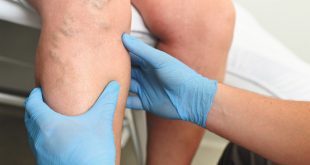 Menopause marks a significant transition in a woman’s life, signaling the end of reproductive years. While it’s a natural process, menopause comes with its own set of changes and challenges, including the increased risk of urinary tract infections (UTIs). The chance of recurrent UTIs increases as a person progresses through menopause. A 2019 study found that 19–36% of premenopausal females experience recurrent UTIs and that the rate of recurrence increases to 55% after menopause. Understanding the relationship between menopause and UTIs is crucial for women’s health and well-being.
Menopause marks a significant transition in a woman’s life, signaling the end of reproductive years. While it’s a natural process, menopause comes with its own set of changes and challenges, including the increased risk of urinary tract infections (UTIs). The chance of recurrent UTIs increases as a person progresses through menopause. A 2019 study found that 19–36% of premenopausal females experience recurrent UTIs and that the rate of recurrence increases to 55% after menopause. Understanding the relationship between menopause and UTIs is crucial for women’s health and well-being.
1. Overview of Menopause
Menopause typically occurs around age 51, though it can vary widely among individuals. It is defined as the cessation of menstrual periods for 12 consecutive months, marking the end of a woman’s reproductive phase. During menopause, hormonal changes, particularly the decline in estrogen levels, lead to various symptoms such as hot flashes, night sweats, mood swings, and vaginal dryness.
2. Connection between Menopause and UTIs
The drop in estrogen levels during menopause plays a significant role in the increased susceptibility to UTIs. Estrogen helps maintain the health of the urinary tract by supporting the growth of beneficial bacteria and maintaining the integrity of the vaginal and urinary tissues. As estrogen levels decline, the vaginal pH becomes less acidic, creating an environment conducive to the growth of harmful bacteria like E. coli, which can ascend the urinary tract and cause infections.
3. Managing and Preventing UTIs during Menopause and Beyond
Managing UTIs during menopause involves a combination of preventive measures and treatment strategies. It’s essential for women to:
• Stay hydrated: Drinking plenty of water helps flush out bacteria from the urinary tract.
• Practice good hygiene: Wiping from front to back after using the toilet helps prevent the spread of bacteria from the anus to the urinary tract.
• Urinate frequently: Emptying the bladder regularly helps prevent bacteria buildup.
• Avoid irritants: Certain products such as douches, feminine sprays, and harsh soaps can disrupt the natural balance of vaginal flora and increase the risk of UTIs.
In addition to these measures, incorporating cranberry products into the diet has been shown to help prevent UTIs. Cranberries contain compounds called proanthocyanidins (PACs) that prevent bacteria from adhering to the urinary tract walls, thus reducing the risk of infection. Utiva Cranberry PACs, with a clinically effective dose of 36mg PACs, offer a convenient and natural way to support urinary tract health during menopause and beyond.
Utiva Webinar: Navigating Menopause
To further explore the topic of menopause and its associated challenges, Utiva is hosting a free live webinar/Q&A session titled “Navigating Menopause.” This informative event will feature guest speakers Dr. Susan Oakley, a Urogynecologist, and Shirley Weir, a Menopause Educator.
Don’t miss this opportunity to gain valuable insights and advice on managing menopause-related issues. Register now to reserve your spot and empower yourself with the knowledge to navigate this transformative phase of life.
For more information and to register for the webinar, visit Utiva’s webpage.
https://www.utivahealth.com/menopause
Event Details:
• Date: Tuesday, May 14th
• Time: 7:30 pm EST
• Format: Live Q&A session on menopause
Sources:
• Utiva Health. “Everything You Need to Know About UTIs During Menopause.” Retrieved from Utiva Health Blog:
https://www.utivahealth.ca/blogs/resources/everything-you-need-to-know-about-utis-during-menopause?_pos=2&_sid=4140b6639&_ss=r
• Utiva Health. “Pelvic Health Issues in Women: Navigating Challenges at Every Age.” Retrieved from Utiva Health Blog:
https://www.utivahealth.ca/blogs/resources/pelvic-health-issues-in-women-navigating-challenges-at-every-age?_pos=4&_sid=d5a2c02aa&_ss=
 Central Florida Health and Wellness Magazine Health and Wellness Articles of the Villages
Central Florida Health and Wellness Magazine Health and Wellness Articles of the Villages



